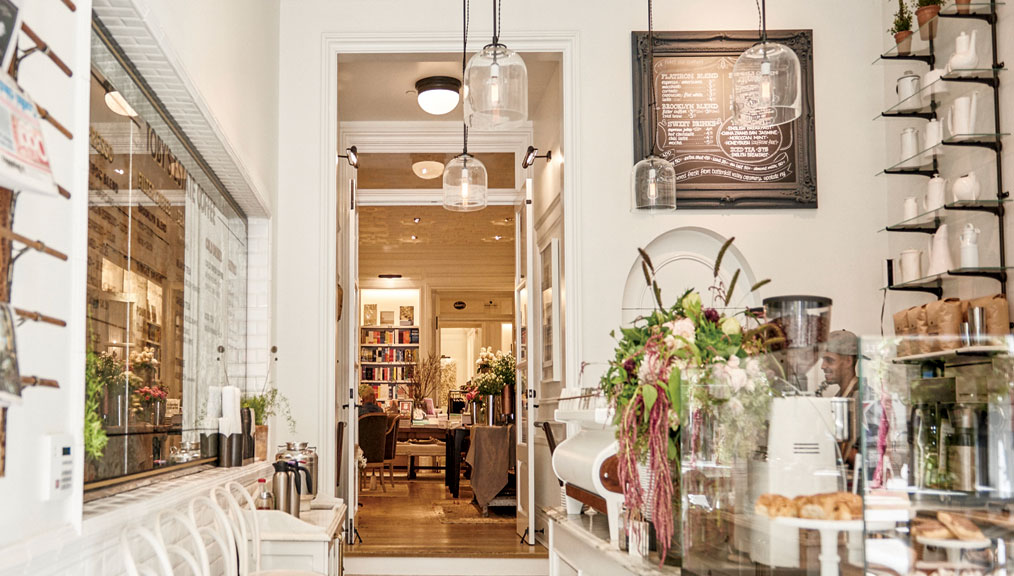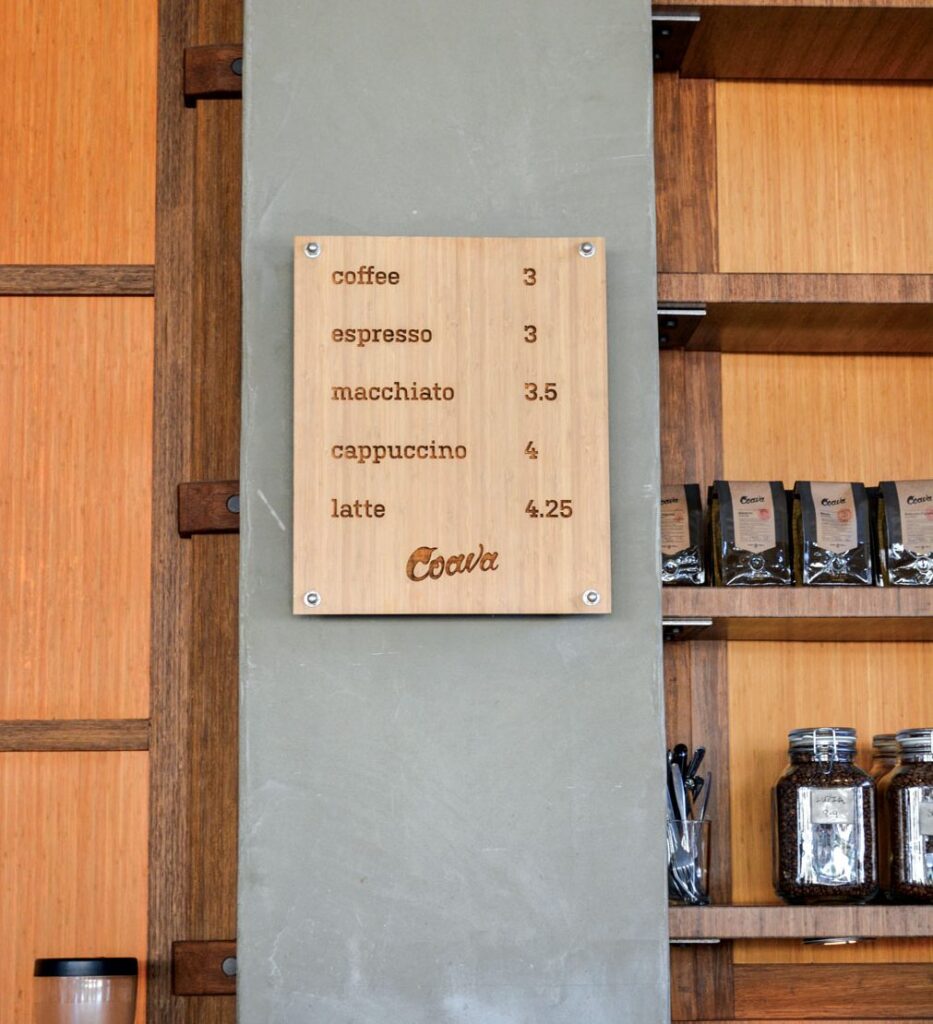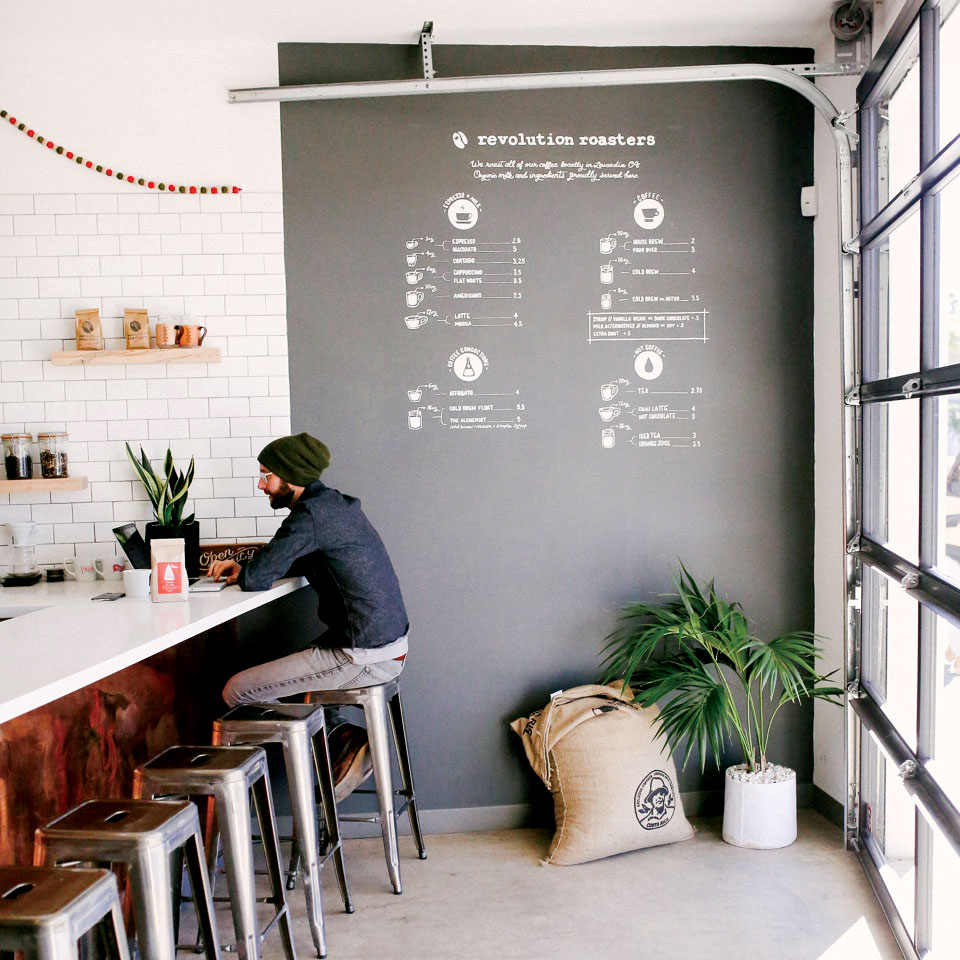In many ways, the café menu is the glue that holds an operation together. Not only does a menu broadcast what you serve, but a menu’s position and presentation can guide and inform a guest’s experience.
A café menu serves as a driver of customer interaction, lists pricing and offerings, defines the style of a business, and establishes boundaries of what can be expected in a particular service environment. It determines what supplies you order, how you source ingredients, and how you train staff.
Without a strong sense of who you are as a business, it can be difficult to shape a menu. Think about times when you peeked at a menu hanging in a window or browsed through online postings before choosing a new restaurant. One glance can give you a sense of the price range, the formality of the dining environment, the type of food or drink served, and even the business’s personality. An informative coffee and tea menu can drive meaningful interactions with customers—and keep them coming back.
A Look in the Mirror
The first step in creating a menu is determining what type of business you’re running. “The concept is the primary driver of menu offerings,” says Scott Siers, a senior vice president at Farmer Brothers, a national coffee roaster and distributor. “Who do you want to be? Is coffee primary?”
A rush-hour drive-thru coffee stand focused on milk-based beverages and smoothies will have a very different approach to menu curation than an urban café focused on highlighting a selection of single-origin coffees roasted in-house. Think about who your business serves, how you want customers to engage with menu items, and the speed at which you envision guests moving through the space. A pour-over bar takes time but allows customers to interact with baristas; batch-brew is conducive to a commuter crowd who want good coffee fast—and your menu should look different for both offerings.
At Perc Coffee, a roastery in Savannah, Georgia, owner Philip Brown gets to know someone when he offers menu development help. “I need to see coffee through their eyes,” Brown says. While it’s tempting to build a menu that draws from the ideas of other cafés, designing a menu around your unique identity sets you up for success in the future.
Take time to test recipes and potential menu offerings—that’ll lead to decisions based on what you think is the best expression of your coffee and tea, not just go off what you see on café menus around you. “You need to totally believe in [your menu] and have thought of every angle,” Brown says. He explains that carefully considering each aspect of the menu—from cup sizes to coffee and milk sourcing to drink names—allows you to speak confidently with customers about your offerings. Ideally, customers will leave with a drink they love.
The Consistency Factor
Make sure your staff is on board when you build a menu. Not only do baristas need to be able to make the drinks on your menu, but they also need to understand why each offering is included to engage with customers and provide education. This also means having a set of ground rules for handling off-menu requests.
Siers recommends establishing how much latitude and creativity you’re willing to give customers who ask for things that aren’t explicitly on the menu. “Too many options complicate the menu, complicates training for the staff, creates inconsistency,” he says, “and ultimately dissatisfies customers.”
Brown recommends sticking to what’s on the menu. He warns against cafés that operate like build-your-own sandwich shops where you can add shots and syrups to any drink and swap milk options—this will ultimately lead to you delivering drinks that have yet to be tested. “If we’re going to have a sweet drink, let’s create a sweet drink,” he says. “A drink that’s been created, that has ingredients, that’s been taste-tested, that we are very confident tastes awesome.”
With regular training, your baristas will know how to guide customers to a drink they’ll enjoy. “It all comes back to the customer,” Brown says. “If we’ve curated and thought about all of these ideas, it’s all an effort to give good customer service, to present the very best product we can to them.”
Design and Layout
Not every single iteration of a drink needs to be on the menu, and menus get confusing when too many options are added to the grid. “It’s not a damn Excel spreadsheet,” Brown says. He advocates simpler menu layouts that offer drinks at one price and size, with options for modifications listed at the bottom, “something to simplify the visual experience,” he says.
Simplifying the menu also involves placement: Siers describes menu layout like a newspaper, read from the top left to the bottom right. “It’s the upper left that I’m going to look to first. I’ve got my core drinks up there. And then I come down and on the bottom: add-ins, syrups, milk,” he says. “It’s that building concept. Simplification with your add-ins, so your menu board is easy to read, easy to understand, and easy to build.” He recommends limiting drink sizes to two options, bringing it back to consistency and the ability for staff to deliver better drinks.
Designing your menu is also an opportunity to revisit your brand. How does the layout of your menu fit into the design of your café? There are many ways to incorporate your menu into your space and weave company branding into the design. Many cafés choose to work with an artist or graphic designer to help create the vision, treating the menu as a design element of the café.
Going Rogue
Even the best-designed menus can get ignored. Some people want the same thing from every shop they go to—but others want to have fun and explore.
One way to engage the latter group is by having a specialty menu in addition to your core offerings. “You will have some people who want to discover [something new],” says Siers. He recommends rotating new drinks every month or on a regular cadence that customers can look forward to.
Levi Anderson, a beverage product specialist with the Kerry Group, encourages cafés to consider a secret or alternative menu. He suggests even using a QR code for customers to access a secondary menu with drink specials and in-depth info on sourcing. “It allows for lots more information to be included on the menu, to be looped into the bigger story,” Anderson says.
Specialty menus are best placed on the counter or in a spot easily visible to customers queuing to order. Offering new beverages for a limited time serves as a trial period for any beverage you might consider adding to the permanent offerings without taking up valuable real estate on the main board.
Cover photo courtesy of Toby’s Estate.
This article was originally published on September 19, 2016 and has been updated to meet Fresh Cup’s current editorial standards.


















